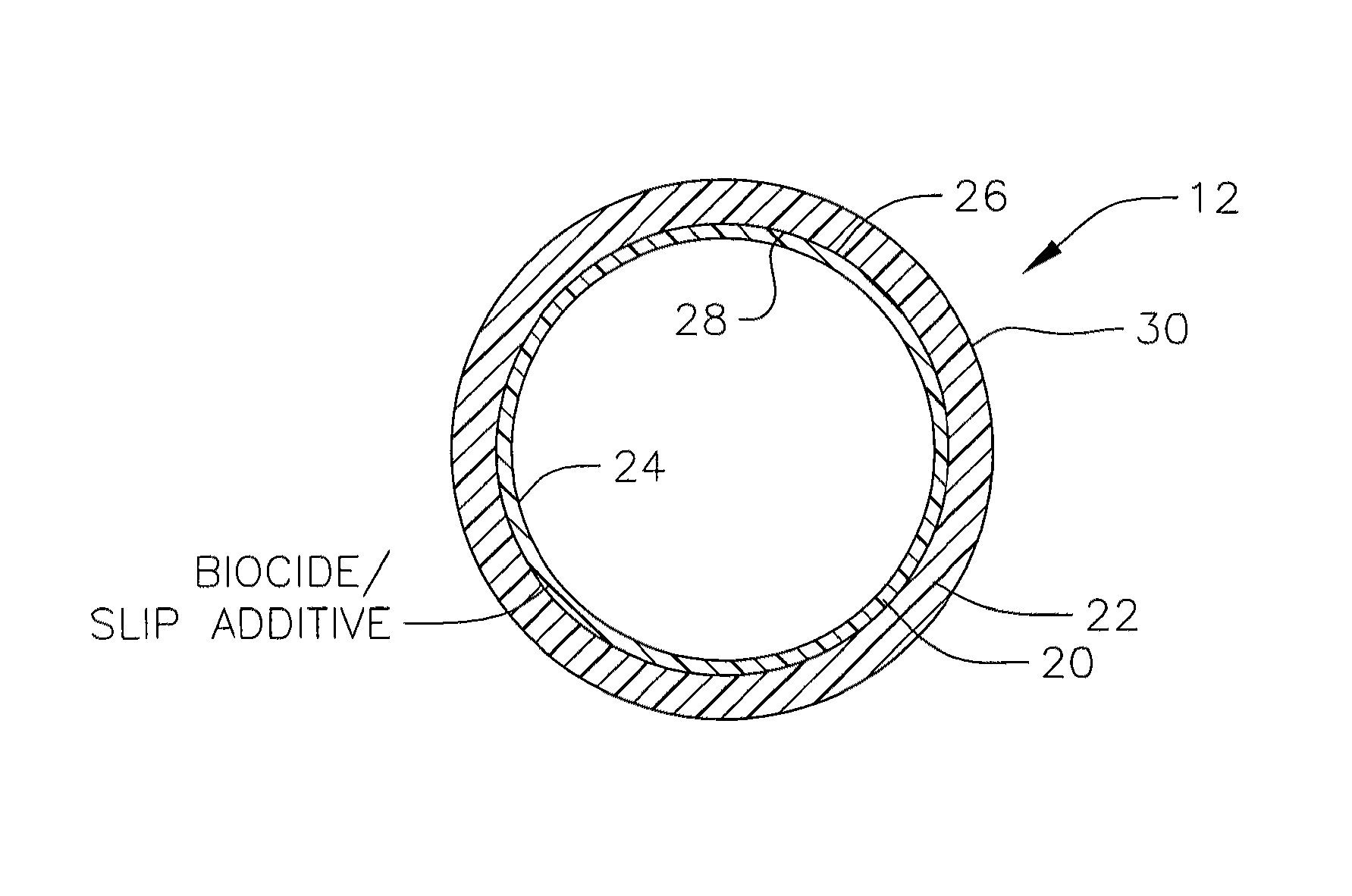Prevention of bacterial adhesion irrigation conduits
a technology of adhesion and irrigation conduit, which is applied in the direction of rigid containers, packaging, filament/thread forming, etc., can solve the problems of unsatisfactory pressure drop within the tube, and achieve the effect of preventing the adhesion of slime and low friction surfa
- Summary
- Abstract
- Description
- Claims
- Application Information
AI Technical Summary
Benefits of technology
Problems solved by technology
Method used
Image
Examples
example
[0037]A drip irrigation conduit 10,000 feet in length was coextruded. The inside liner contained 0.08% by weight VITON FreeFlow dispersed in LLDPE. The extruded material contained 4% by weight of the extrusion polymer component known as INGENIA IP1121, a blend of LLDPE and 2% VITON FreeFlow extrusion additive, dispersed in the LLDPE extrusion material, yielding a VITON content of 0.08% by weight. The outer wall of the coextrusion was LLDPE. The inner wall of the tubing was very smooth and shiny, much more so than a standard extruded LLDPE irrigation conduit. The inner wall of the liner containing the non-stick agent was resistant to adhesion of bacterial slime.
[0038]To test the low friction, non-stick characteristics of the inner liner, a black ink permanent marking pen and a blue ink ball point pen were used to mark the inside wall of the VITON-treated tube. Both easily rubbed off, using only a dry cloth, demonstrating that the non-stick additive is being bloomed to the surface.
[00...
PUM
| Property | Measurement | Unit |
|---|---|---|
| height | aaaaa | aaaaa |
| surface roughness | aaaaa | aaaaa |
| height | aaaaa | aaaaa |
Abstract
Description
Claims
Application Information
 Login to View More
Login to View More - R&D
- Intellectual Property
- Life Sciences
- Materials
- Tech Scout
- Unparalleled Data Quality
- Higher Quality Content
- 60% Fewer Hallucinations
Browse by: Latest US Patents, China's latest patents, Technical Efficacy Thesaurus, Application Domain, Technology Topic, Popular Technical Reports.
© 2025 PatSnap. All rights reserved.Legal|Privacy policy|Modern Slavery Act Transparency Statement|Sitemap|About US| Contact US: help@patsnap.com



